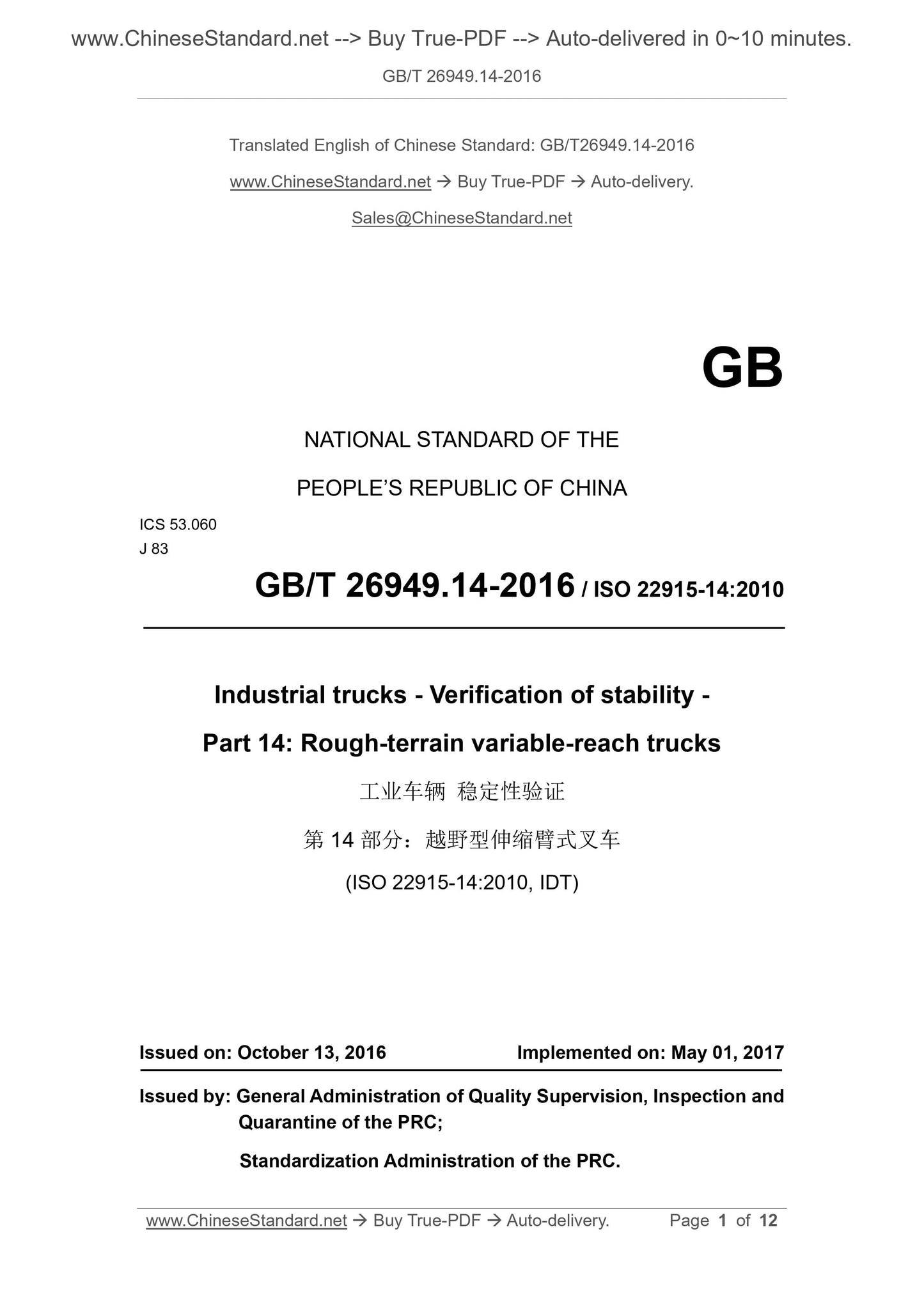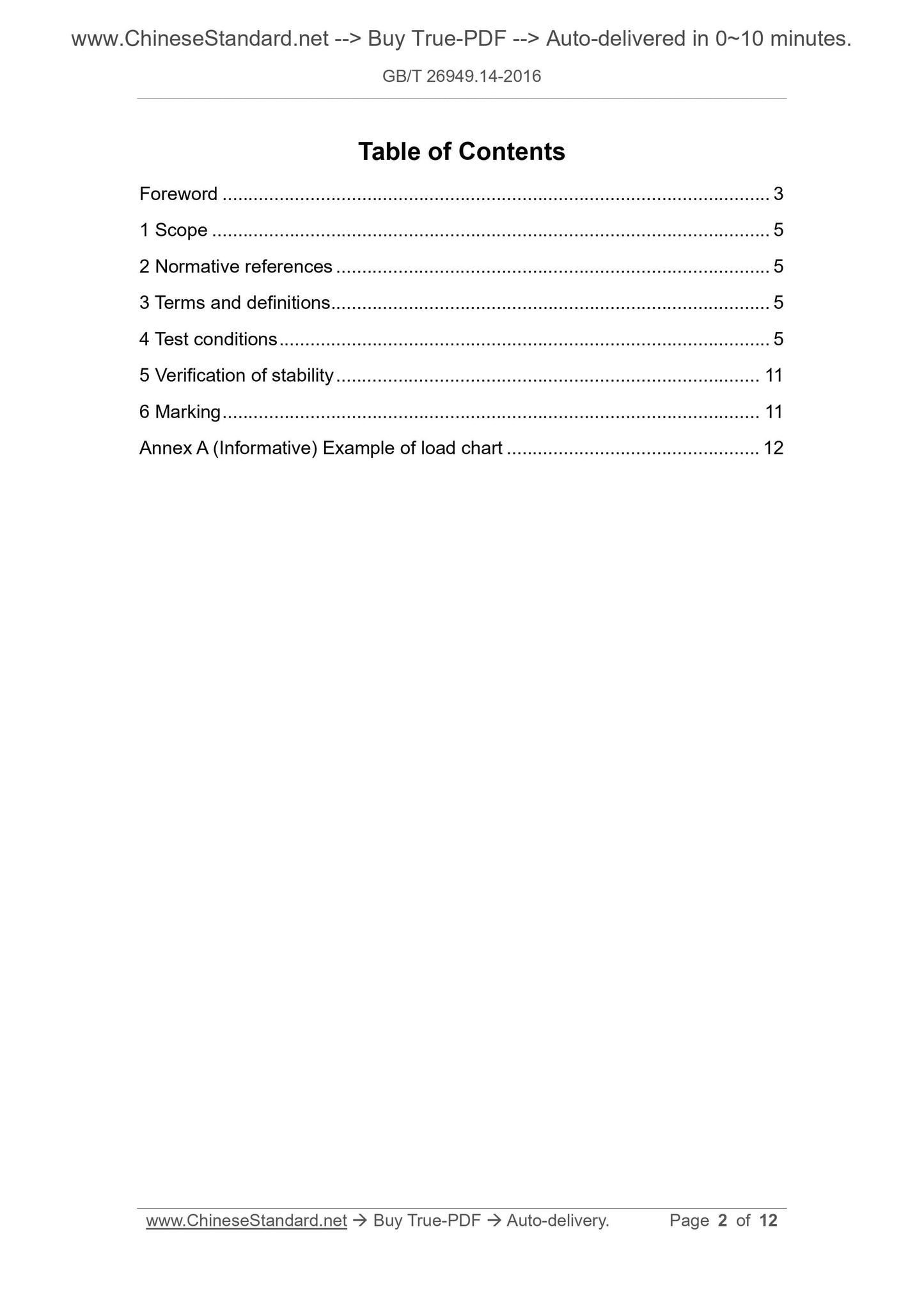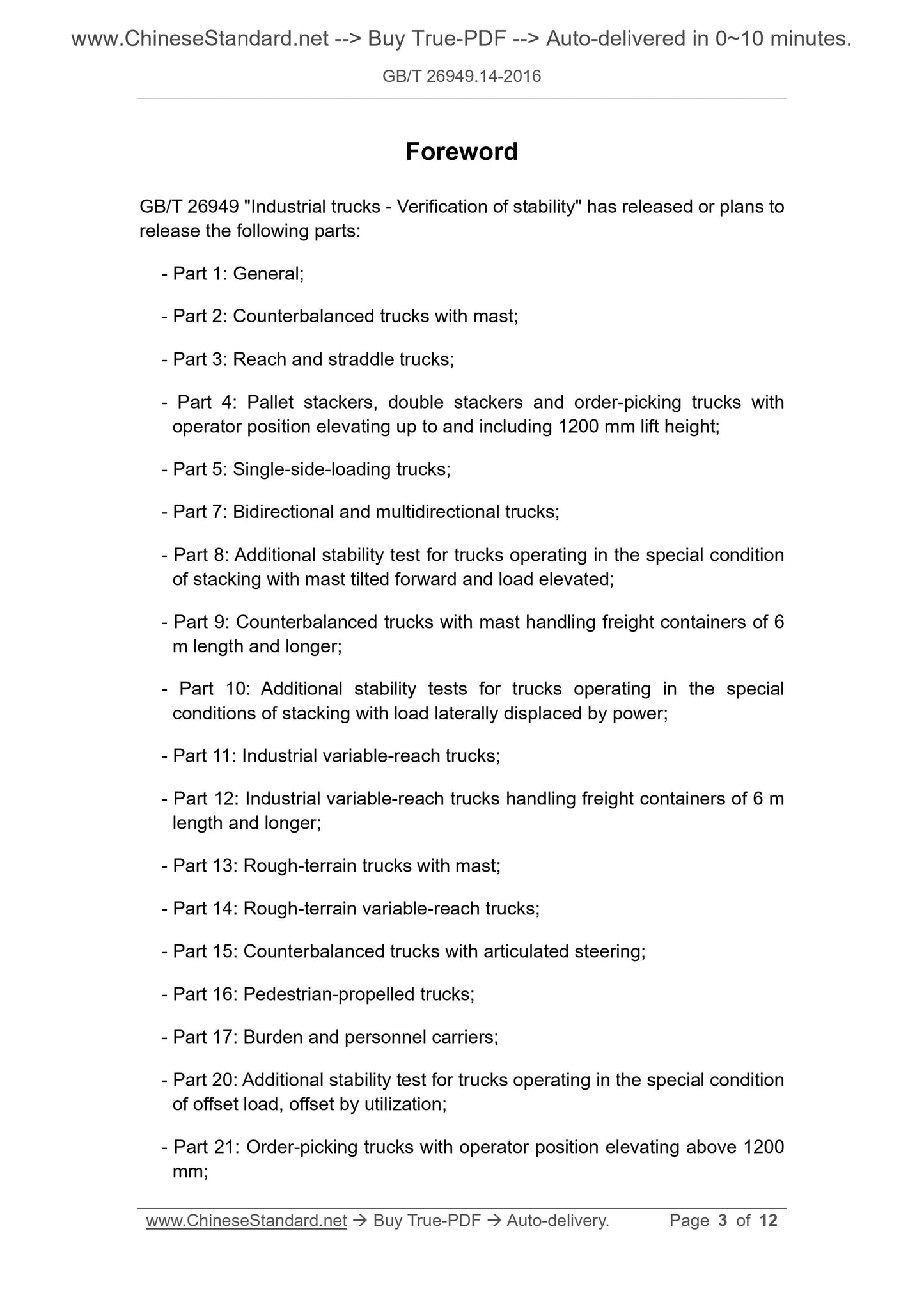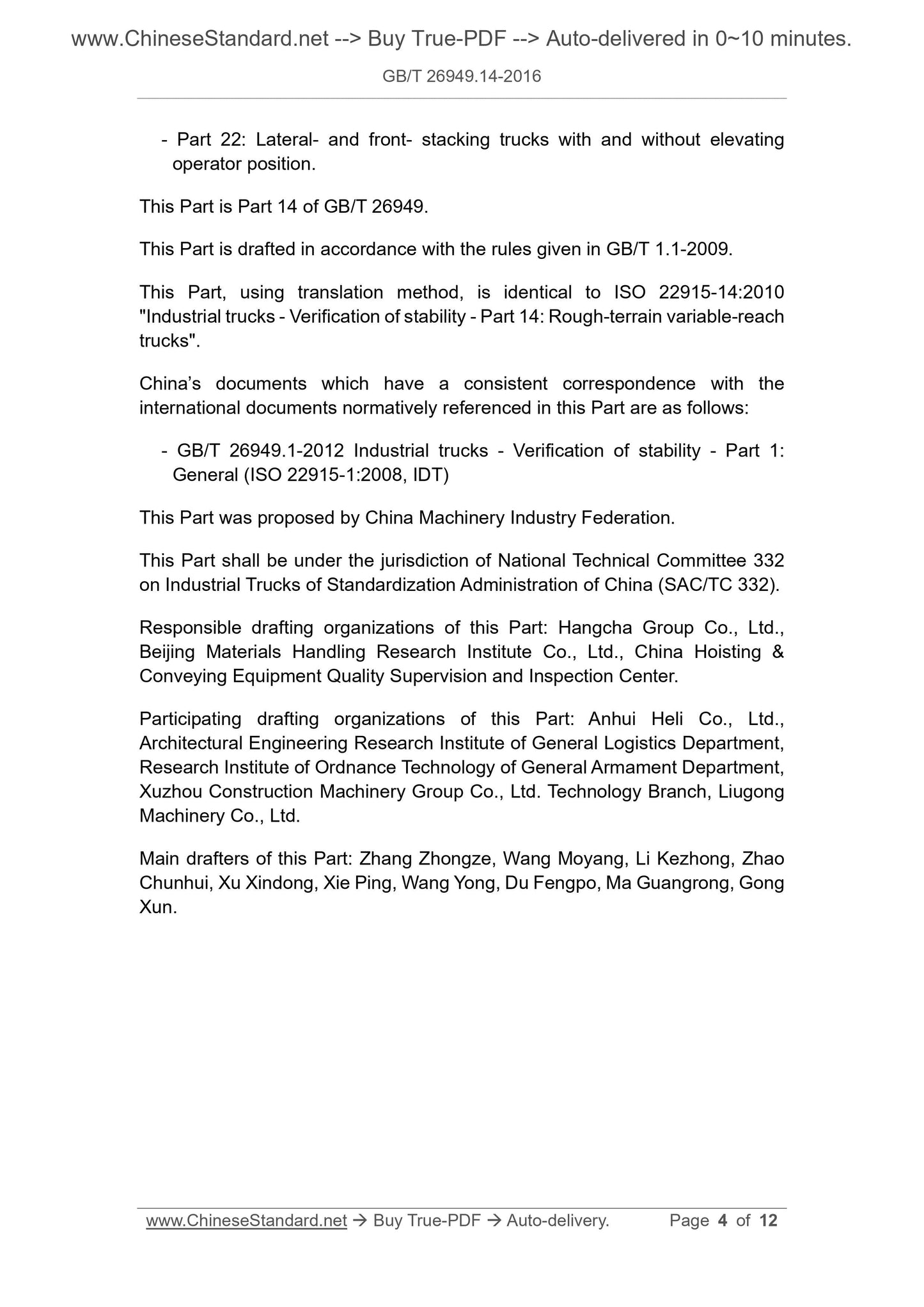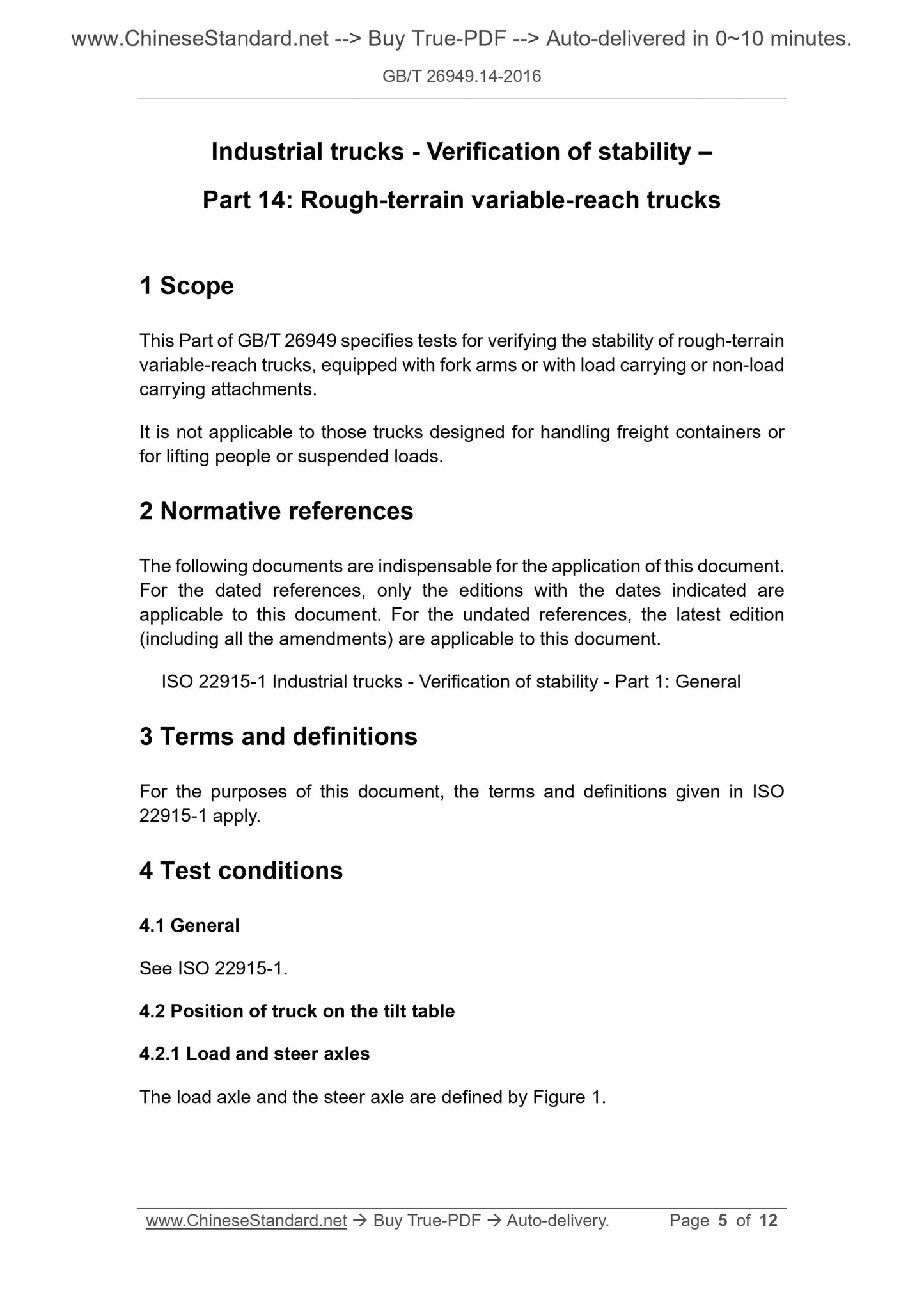1
/
of
5
www.ChineseStandard.us -- Field Test Asia Pte. Ltd.
GB/T 26949.14-2016 English PDF (GB/T26949.14-2016)
GB/T 26949.14-2016 English PDF (GB/T26949.14-2016)
Regular price
$150.00
Regular price
Sale price
$150.00
Unit price
/
per
Shipping calculated at checkout.
Couldn't load pickup availability
GB/T 26949.14-2016: Industrial trucks -- Verification of stability -- Part 14: Rough-terrain variable-reach trucks
Delivery: 9 seconds. Download (and Email) true-PDF + Invoice.Get Quotation: Click GB/T 26949.14-2016 (Self-service in 1-minute)
Newer / historical versions: GB/T 26949.14-2016
Preview True-PDF
Scope
This part of GB/T 26949 provides for the verification of the stability of off-road telescopic forklift trucks with forks, with or without load handling attachments.Sexual test method.
This section does not apply to vehicles designed to carry freight containers, lift personnel or suspended cargo.
Basic Data
| Standard ID | GB/T 26949.14-2016 (GB/T26949.14-2016) |
| Description (Translated English) | Industrial trucks -- Verification of stability -- Part 14: Rough-terrain variable-reach trucks |
| Sector / Industry | National Standard (Recommended) |
| Classification of Chinese Standard | J83 |
| Classification of International Standard | 53.060 |
| Word Count Estimation | 10,123 |
| Date of Issue | 2016-10-13 |
| Date of Implementation | 2017-05-01 |
| Regulation (derived from) | National Standard Notice No.1716 of 2016 |
| Issuing agency(ies) | General Administration of Quality Supervision, Inspection and Quarantine of the People's Republic of China, Standardization Administration of the People's Republic of China |
Share
